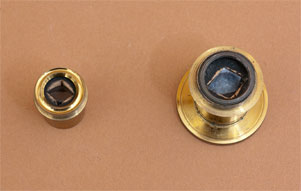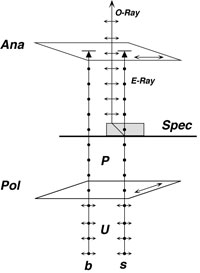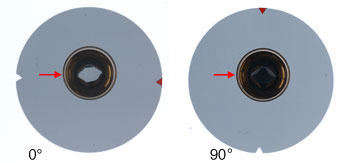

Ray path through a Nicol prism
Nicol prism in brass mount
A Nicol Prism consists of two pieces of calcite glued together. Calcite is birefringent, and thus generates two polarized rays (O-Ray and E-Ray) from unpolarized impinging light. The angle of the glued surfaces causes one of the rays to be internally reflected and lost. The result is that only the plane-polarized E-Ray is emitted from the opposite end.
This type of polarizer was invented by the Scottish physicist William Nicol (1768-1851).


Background light (b) that does not interact with the specimen is effectively blocked by the Analyzer ("Extinction", above). Thus the background is black. This condition is referred to as a polarized darkfield.
Light that interacts with a birefringent specimen (s) is itself plane-polarized, generating two new rays polarized at right angles. One of these two new rays effectively passes through the Analyzer. Thus a crystalline sample appears bright on a dark background.